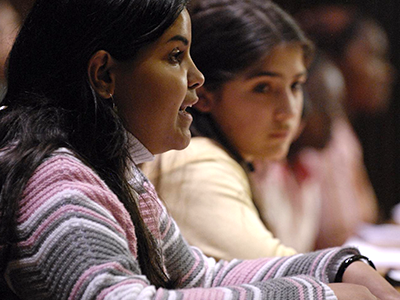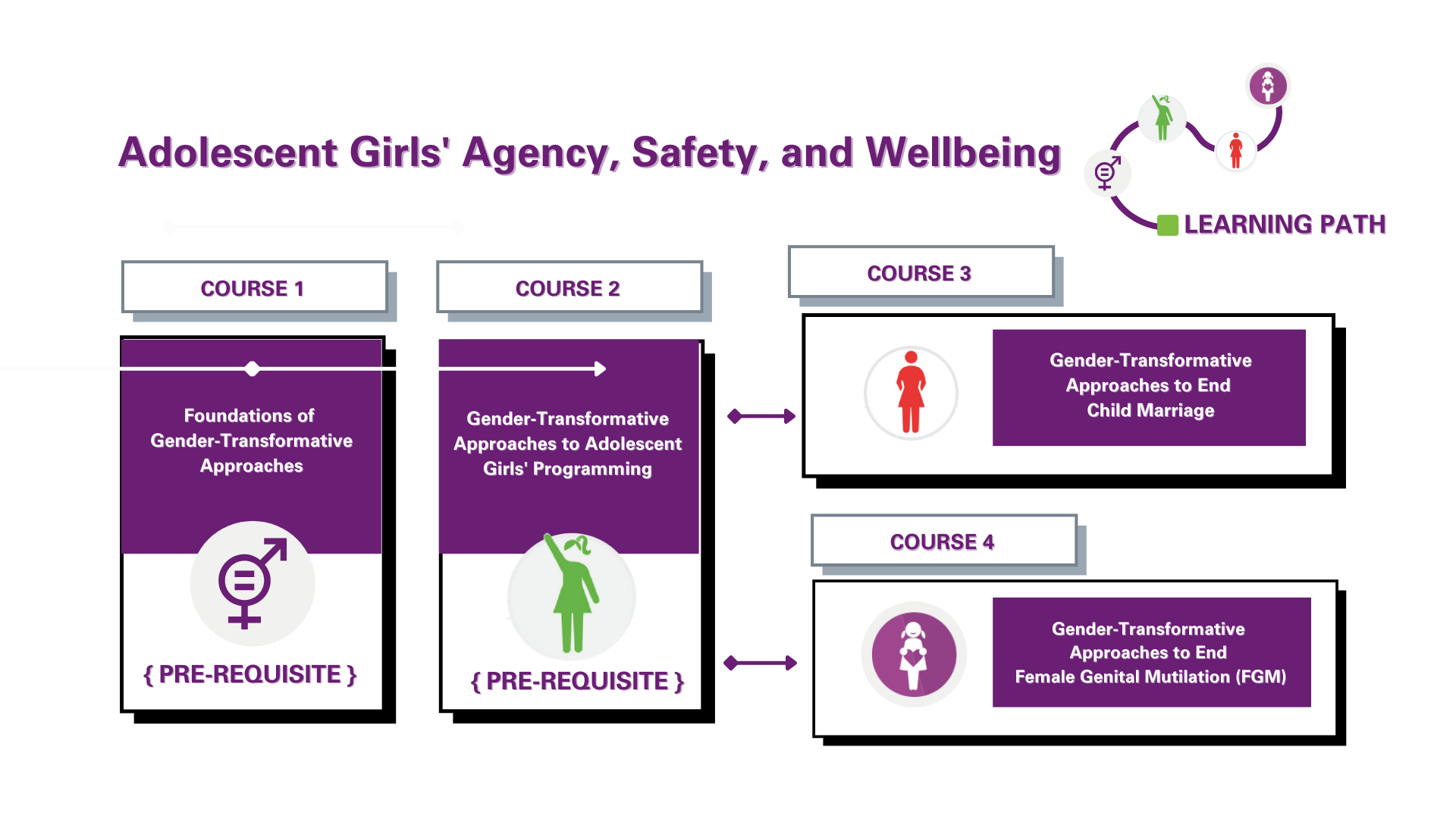Cover photo: © UNICEF/NYHQ2007-0187/Susan Markisz
About the course
Welcome to ‘Gender-Transformative Approaches to Programming for Adolescent Girls’, the second course of the learning path, Adolescent Girls' Agency, Safety, and Wellbeing.
Around the world, adolescent girls face multiple challenges. Persistent gender inequalities dictate their conditions, realities and aspirations for the future. Many girls in adolescence will experience harmful practices such as child marriage and female genital mutilation (FGM), which are largely fueled by discriminatory gender norms and triggered by poverty and a lack of education and opportunity.
Learning objectives
- Identify the linkages between gender-transformative approaches and adolescent girls' empowerment
- Describe why intentional programme design is a key strategy in achieving gender transformation
Audience
UN personnel, government entities and non-governmental organizationsLength
This course is approximately 45 minutes in length.
Methodology
This course is presented as a set of 'micro-learning' modules. Modules feature a mix of interactive lessons and learning activities, readings, videos, resources and more. This course includes a final quiz. Score 80 per cent on the final quiz to pass this course.
Modules in this course include:
1. Test your gender-transformation knowledge
2. Setting the stage: Why adolescent girls?
3. Reframing empowerment for gender transformation
4. Making your programme gender transformative
5. Girls at the centre
6. If, when and how to engage boys?
7. Engaging men and boys in gender transformation
8. Learning assessment
9. Course evaluation & certificate
Accessibility note: Videos have closed-captioning and/or a text-based transcript. Click the three vertical buttons in the lower right hand corner of the video player to turn captions on or off.
Completion status: When you have completed each section of the course, make sure the click the radio button to indicate completion. A green checkmark indicates the item is complete.
Structure
This course is part of the wider learning path 'Adolescent Girls' Agency, Safety and Wellbeing'. Once you complete this course, you might wish to take one or both of the following courses, on ‘Gender-Transformative Approaches to End Child Marriage’ and ‘Gender Transformative Approaches to Abandon Female Genital Mutilation’. Child marriage and FGM are harmful practices that several UN agencies, governments, civil society and communities are trying to eliminate. The courses provide further context on programming approaches and the application of gender-transformation concepts in concrete programming settings.
Rosanne Wong, Gender Equality, rwong@unicef.org

